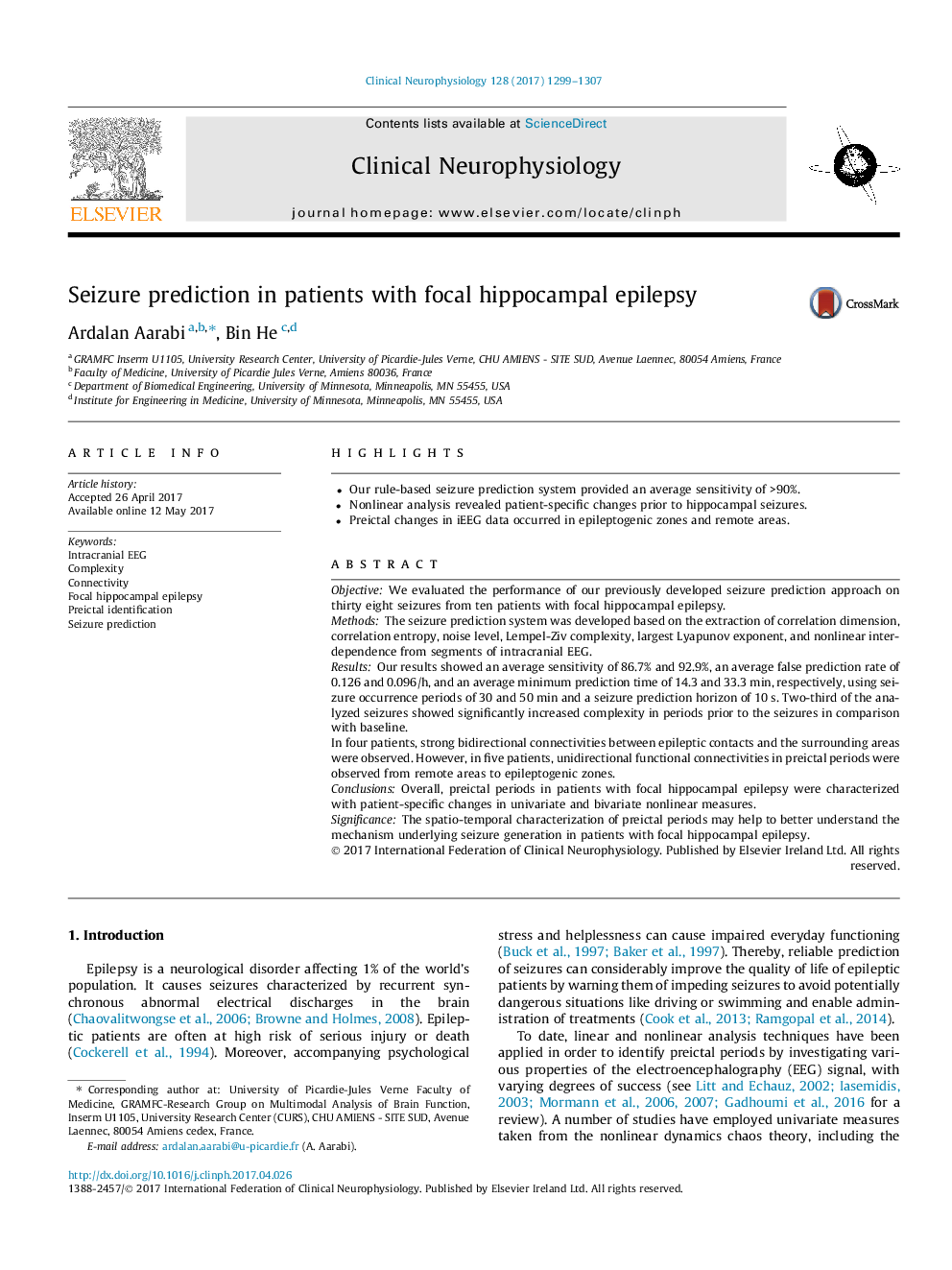| Article ID | Journal | Published Year | Pages | File Type |
|---|---|---|---|---|
| 5627827 | Clinical Neurophysiology | 2017 | 9 Pages |
â¢Our rule-based seizure prediction system provided an average sensitivity of >90%.â¢Nonlinear analysis revealed patient-specific changes prior to hippocampal seizures.â¢Preictal changes in iEEG data occurred in epileptogenic zones and remote areas.
ObjectiveWe evaluated the performance of our previously developed seizure prediction approach on thirty eight seizures from ten patients with focal hippocampal epilepsy.MethodsThe seizure prediction system was developed based on the extraction of correlation dimension, correlation entropy, noise level, Lempel-Ziv complexity, largest Lyapunov exponent, and nonlinear interdependence from segments of intracranial EEG.ResultsOur results showed an average sensitivity of 86.7% and 92.9%, an average false prediction rate of 0.126 and 0.096/h, and an average minimum prediction time of 14.3 and 33.3Â min, respectively, using seizure occurrence periods of 30 and 50Â min and a seizure prediction horizon of 10Â s. Two-third of the analyzed seizures showed significantly increased complexity in periods prior to the seizures in comparison with baseline.In four patients, strong bidirectional connectivities between epileptic contacts and the surrounding areas were observed. However, in five patients, unidirectional functional connectivities in preictal periods were observed from remote areas to epileptogenic zones.ConclusionsOverall, preictal periods in patients with focal hippocampal epilepsy were characterized with patient-specific changes in univariate and bivariate nonlinear measures.SignificanceThe spatio-temporal characterization of preictal periods may help to better understand the mechanism underlying seizure generation in patients with focal hippocampal epilepsy.
